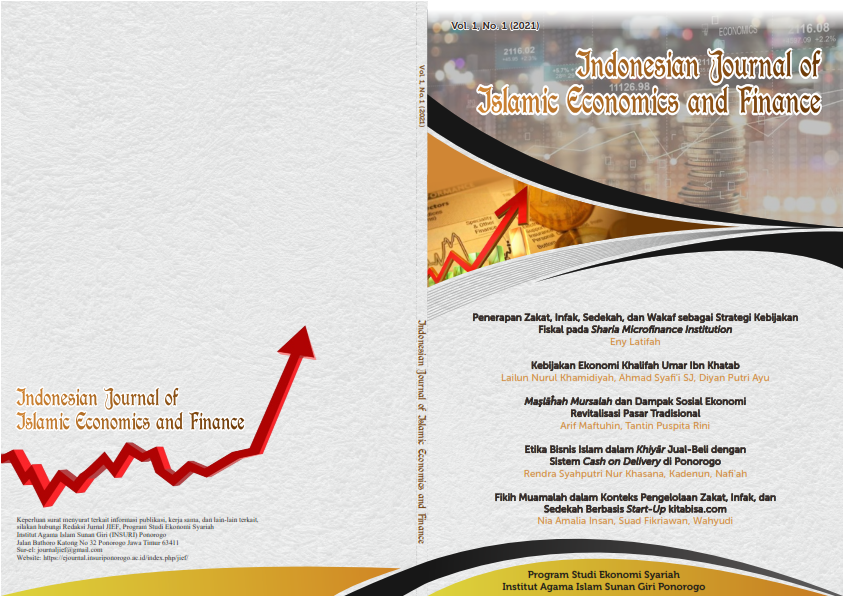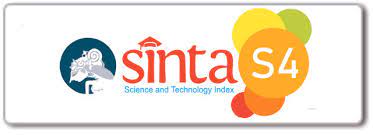Economic Structure Transformation and Changes in the Proportion of Labor in East Java Province in 1998 – 2018
DOI:
https://doi.org/10.37680/ijief.v3i2.6269Keywords:
Transformation of economic structure; changes of the labor proportion; economic growth; income per capitaAbstract
Transformation of economic structure is not only act as a sector dominance contributing to Gross Regional Domestic Product, but also acts as the dominance of labor sector absorption. In 1994, the dominance of primary sector in contributing East Java’s Gross Regional Domestic Product is already replaced by secondary sector and later by tertiary sector in 2004. The labor sector absorption is still dominated by agricultural sector until now. This research was aimed to describe the patterns of Transformation of economic structure and changes in the proportion of labor in East Java Province from 1998 to 2018, as well as analyzed the effect of each variables. By using factor analysis for latent variables first, the quantitative result based on path analysis has proved that economic growth and income per capita has a direct effect to the Transformation of economic structure. The increase of economic growth and income per capita has lead to the decrease in agricultural (primary sector) and industrial (secondary sector) proportion in contributing East Java’s GRDP which is followed by the increase proportion in trade, hotel and restaurant (tertiary sector). The Transformation of economic structure has a direct effect to change the proportion of labor, whereas the economic growth and income per capita have indirect effect to that. During this process, the agricultural labor absorption decreased very slowly while industrial labor absorption increased slowly, as well as the trade, hotels and restaurants. The results also showed that the changes in the proportion of labor has direct effect to income per capita along with the domination of high productivity sector such as trade, hotels and restaurants which leads the economic growth.
Downloads
References
Bakir, z dan Manning Cris. 1998. Angkatan Kerja di Indonesia, Partisipasi Kesempatan dan Pengangguran. Yogyakarta : Pusat Penelitian UGM.
Basri, Faisal. 2009. Catatan Satu Dekade Krisis, Transformasi, Masalah Struktural dan harapan EKonomi Indonesia. Esensi Erlangga Group. Jakarta.
Borjas, George J,2000, Labor Economics, Taiwan : McGraw-Hill
Buzaglo, Jorge. 1999. A Model of Structural Change and Openness : Applicatons to the argentine Economy. International Review od Applied Economics.
http://www.proquest.com/pqdweb diakses pada tanggal 13 Januari 2018
Ghozali. Imam, 2009, Ekonometrika : Teori, Konsep dan Aplikasi dengan SPSS 17, Badan Penerbit, Universitas Diponegoro, Semarang.
Jhingan ,M.L.1999, Ekonomi Pembangunan Dan Perencanaan, Terjemahan , Jakarta : PT Raja Grafindo Persada
Ketut, Kariyasa. 2001. Perubahan Struktur Ekonomi dan Kesempatan Kerja Serta Kualitas Sumber Daya Manusia di Indonesia. Pusat Analisis Sosial Ekonomi dan Kebijakan Pertanian Bogor. http://www.(2)soca-kariyasastrktr
Kuncoro, Mudrajad. 2006. Ekonomi Pembangunan: Teori, Masalah, dan Kebijakan, UPPAMPYKPN, Yogyakarta.
Mangkoesoebroto, Guritno. 1994. Kebijakan Ekonomi Publik di Indonesia : Substansi dan Urgensi, cetakan pertama, PT. Gramedia Pustaka Utama, Jakarta.
Mare, Randveer., & Martti, Randveer. (2006). Structural Changes in Estonian Economy. The Business Review, Cambridge.http://www.proquest.com/pq dweb diakses pada tanggal 13 Januari 2010
Martinussen, John. 1997. Society, State and Market: A Guide to Competing Theories ofDevelopment. United Kingdom: Redwood Books Ltd
Mulyadi, S. 2003. Ekonomi Sumberdaya dalam Perspektif Pembangunan, PT. Raja Grafindo Persada. Jakarta.
Riduan, dan Kuncoro. 2007. Cara Menggunakan dan Memaknai Analisis Jalur (Path Analysis). Alfabeta. Bandung.
Robinson, Tarigan. 2005. Ekonomi Regional Teori dan Aplikasi, Medan: Bumi Aksara
Santosa, Bambang Heru, and Heath McMichael. 2004. Industrial Development in East Java: A Special Case. The Australia National University Working Paper. Australia.
Sarwedi. 2010. Analisis Determinan Perubahan Penawaran Barang Eksport Indonesia,Januari 2010.
Sholeh, Maimun. Permintaan dan Penawaran Tenaga Kerja Sektor Upah: Teori Serta Beberapa Potretnya di Indonesia. Universitas Negeri Yogyakarta. 2007
Sitanggang dan J Nachrowi. 2005, Pengaruh Struktur Ekonomi Pada Penyerapan Tenaga Kerja Sektoral : Analisis Model Demometrik Di 30 Provinsi Pada 9 Sektor Di Indonesia , Makalah ,hal 1-44
Kusreni, Sri. 2009. Pengaruh Perubahan Struktur Ekonomi terhadap Spesialisasi Sektoral dan Wilayah serta Struktur Penyerapan Tenaga Kerja Sektoral untuk Daerah Perkotaan di Jawa Timur. Majalah Ekonomi, Vol XIX, No. 1 : 20-31.
Sukirno, Sadono. 2006. Ekonomi Pembangunan : Proses, Masalah dan Dasar Kebijakan, Edisi Kedua, Jakarta : Penerbit Kencana Prenada Media Group.
Tambunan, Tulus T.H. 2001. Perekonomian Indonesia. Teori dan Temuan Empiris. Jakarta : Indonesia.
Todaro, M. and Smith. S, 2004. Pembangunan Ekonomi di Dunia Ketiga, Edisi kedelapan, Jakarta: Erlangga.
Undang-Undang Republik Indonesia Nomor 13 Tahun 2003 tentang Ketenagakerjaan. Jakarta : Sinar Grafika
Willis, Katie. 2005. Theories and Practices of Development. New York: Routledge
World Bank. 2011. Diagnosa Pertumbuhan Ekonomi Jawa Timur:Mengidentifikasi Hambatan-Hambatan Utama Pertumbuhan yang Inklusif di Provinsi Terbesar Terbesar Kedua di Indonesia. Jakarta
Downloads
Published
How to Cite
Issue
Section
License
Copyright:
An author who publishes in Indonesian Journal of Islamic Ekonomics and Finance agrees to the following terms:
- Author retains the copyright and grants the journal the right of first publication of the work simultaneously licensed under a Creative Commons Attribution-NonCommercial 4.0 International License that allows others to share the work with an acknowledgment of the work's authorship and initial publication in this journal.
- Author is able to enter into separate, additional contractual arrangements for the non-exclusive distribution of the journal's published version of the work (e.g., post it to an institutional repository or publish it in a book) with the acknowledgment of its initial publication in this journal.
- Author is permitted and encouraged to post his/her work online (e.g., in institutional repositories or on their website) prior to and during the submission process, as it can lead to productive exchanges, as well as earlier and greater citation of the published work (See The Effect of Open Access).
License:
-
Attribution — You must give appropriate credit, provide a link to the license, and indicate if changes were made. You may do so in any reasonable manner, but not in any way that suggests the licensor endorses you or your use.
-
NonCommercial — You may not use the material for commercial purposes.
-
No additional restrictions — You may not apply legal terms or technological measures that legally restrict others from doing anything the license permits.
You are free to:
- Share — copy and redistribute the material in any medium or format
- Adapt — remix, transform, and build upon the material

This work is licensed under a Creative Commons Attribution-NonCommercial 4.0 International License.



.png)







